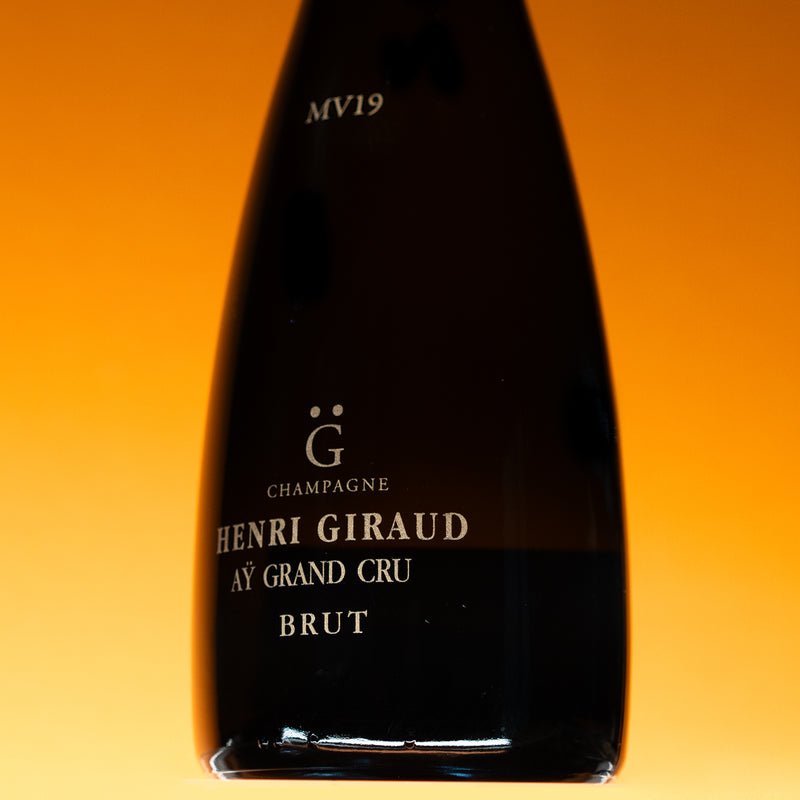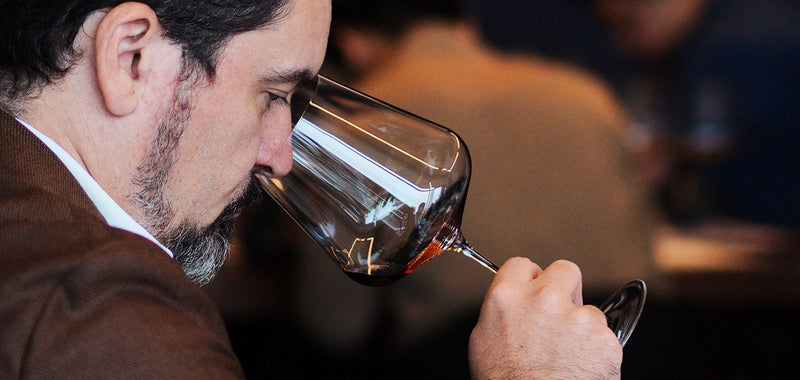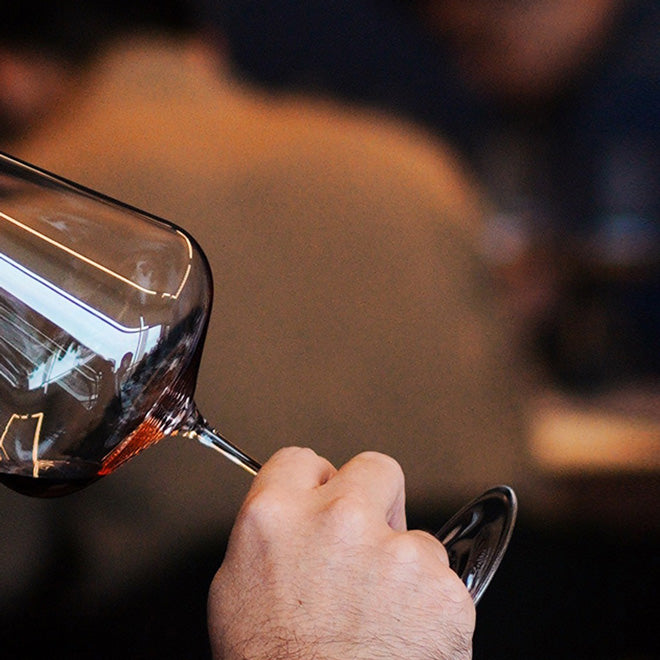A former seat of the papacy and inventive pioneer of appellation guidelines, the legendary Châteauneuf-du-Pape is the beating heart of the Rhône. And, in the context of the Rhône, what defines Châteauneuf-du-Pape is its scale. Everything about it is big; from the sprawling terrain, the endless list of grape varieties, the array of producers and the sheer grandiosity, richness and boldness of the wines.

History of Châteauneuf-du-Pape
Châteauneuf-du-Pape; "The Pope’s New Castle", refers to a time when the seat of the Roman Catholic Church was in Avignon (between 1309–1377). The region retains a rich history from the papal presence that extended beyond its borders and forged its far reaching reputation, with early vines planted by the ancient Romans.
The first Pope to relocate to Avignon was Pope Clement V. Local wines being produced during this period were mainly made by the Church, or for the Church and its religious activities. An avid wine lover, Clement V favoured and promoted Burgundy, while the subsequent Pope, John XII was a fan of Chateauneuf-du-Pape wine and helped contribute to improved viticultural practices in the region.
By 1344, nearly half of Chateauneuf-du-Pape was devoted to producing grapes for wine. In the early days, vineyards were divided into small parcels, explaining why the holdings of some estates are spread all over the region.

The Modern Era of the Châteauneuf-du-Pape Appellation
The Institut National des Appellations d’Origine officially established the Châteauneuf-du-Pape appellation in 1936, and required growers to adhere to a strict set of rules following the production and sale of wines under the official Chateauneuf-du-Pape designation.
Amongst other requirements, 100% of the fruit must be harvested by hand, and vines also have to be at least 4 years of age to be included in the wine. The wines must also be at least 12.5% alcohol, and chaptalization (addition of sugar during fermentation) was not allowed.
The trademark emblem of Châteauneuf-du-Pape wines is the papal coat of arms of the city of Avignon: two crossed keys, that of Saint Peter. The presence of this emblem guarantees the authenticity and quality of the wine, and any wine not up to standard is refused the right to the appellation.
The Appellation of Châteauneuf du Pape
Sitting close to the border of Provence towards the bottom of the Rhône Valley, the appellation of Châteauneuf-du-Pape is 3,231 hectares in size. Divided into 5 communes, Chateauneuf-du-Pape is the largest area, followed by Orange, Courthezon, Sorgues and Bedarrides.

A Mosaic of Terroir
With its combination of rocks, stone, sand, limestone and clay terroir, the soils found in Châteauneuf-du-Pape are perfect for the grapes grown in the appellation.
The rocky, stone filled terroirs in the west of Châteauneuf-du-Pape produces ripe, concentrated, full bodied, intense wines. The cooler terroirs with its limestone deposits make it perfect for the white wines. In comparison, there is more sand, clay, pebbles, limestone and marl, but less large stones and rocks in the northern part of the appellation, where Orange is located. The red wines produced are elegant and supple with intense garrigue aromatics. In the southern part of the appellation, the soils contain more sand, gravel, marl, clay and limestone in the terroir, making it ideal for producing wines with richness and concentration.
A vital factor contributing to the uniqueness of the wines from Châteauneuf-du-Pape is the proliferation of old vines, with numerous vineyards and parcels with vines that are older than a century.
A Mediterranean climate
Shaped by its close proximity to the Rhone river, the weather in Châteauneuf-du-Pape is often hot, dry, sunny in the summer, with cool, but seldom freezing winter conditions. This unique climate and terroir help the grapes achieve ripeness that few other regions can come close to.
In recent years, the trend at the top estates is a move to organic or sustainable, biodynamic farming techniques. The strong, cold, dry winds blowing from north to south are a key component in the use of organic and biodynamic farming techniques, as it maintains the hygiene by keeping the vines, soils and grapes cleaner, and helps in reducing potential disease such as insect pests as well.
Over the last 12 years, the biodynamically farmed vineyard has risen to the top of Châteauneuf-du-Pape’s quality hierarchy. The two red wines produced have been stunning, with the regular cuvée of Châteauneuf-du-Pape one of the finest in the appellation, and the limited production Cuvée Vieilles Vignes one of the world’s truly magnificent wines.” Robert Parker, The Wine Advocate
In Châteauneuf-du-Pape, more producers are committed to making the best wines possible, and much of the credit for the growth in quality and popularity in the region belongs to the wine critic Robert Parker. His constant championing of the wines from the Rhone earned the area fame and a lot more fortune.

A Symphony of 13 Varietals
Châteauneuf-du-Pape is one of the places where the art of blending really shines. A total of 13 grape varieties are allowed to be planted in the appellation, Grenache, Syrah, Mourvedre, Picpoul, Terret Noir, Counoise, Muscardin, Vaccarese, Picardan, Cinsault, Clairette, Roussanne and Bourboulenc.
Grenache is the king of the grapes in the region, close to 75% of all of the vines planted with wineries using 100% Grenache, or up to 90% Grenache in the blend. Syrah and Mourvedre were planted during the 1950’s and 1960’s in part to add more structure and colour in the Grenache based wines. With the continuous rise of temperatures in recent years, Counoise and Cinsault are added to help reduce the alcohol content.
Taste and Serving
Despite the wide and diverse array of styles of the red Châteauneuf-du-Pape wines, they share similar flavours of fresh red and black cherries, strawberry, kirsch, black pepper, black raspberry, spice, earth and garrigue (fresh herbs typical of the region). It’s wide range of drinkability means the majority of wines are delicious with luscious texture when enjoyed young and does not necessarily require ageing or cellaring, while its ability to age (typically about 10-20 years depending on producer, vintage, and style) results in a silky character.
Although the bulk of the production is devoted to producing red Châteauneuf-du-Pape, only 7% of the wine is white, making it one of the most prestigious wines in France. Châteauneuf-du-Pape Blanc wines are mainly well-liked for their fruit-forward display of fresh, sweet, tropical, citrus, honeysuckle, orange, occasional exotic fruit and spice notes, while delivering rich, lush textures. These whites typically age up to about 10 years.
Serving: Decant the wines for about an hour, and lesser for older wines. Serve cool, around 16–18 ºC.
Food Pairing
One of the most versatile wine regions for wine and food pairing, the diverse style of the Châteauneuf-du-Pape, coupled with its natural freshness and spicy quality, complements perfectly with juicy and racy meat-based food, such as grilled beef, veal, pork, game, duck, sausage and lamb. It is also a wine that is easy to pair with many different Asian dishes, as well as stews and braised dishes, cassoulet or rich seafood dishes.

Brand Highlight: Domaine de Marcoux
Marcoux is one of the benchmark producers in Châteauneuf-du-Pape, a French pioneer leading in organic and biodynamic farming since 1990. Grown on a diversity of soils from sandy soils to clay dominated soils with century old Grenache vines, the Domaine’s respect for its terroir results in quality wines that are powerful yet elegant.
Devoting themselves to the estate and to making quality wines, sisters Sophie and Catherine Armenier oversaw the viticulture in 1995. Today, Sophie’s son, Vincent Estevenin, has taken his place at the Domaine, bringing his youth, passion and skills to the winery.

With the help from sheep in the mowing of the vineyard, as well as the increase in tree plantation on the property and working the soil less to encourage grass and plants to grow between the rows, Vincent is intent on increasing his vineyard’s biodiversity even further. Their modest cellar utilises stainless steel tanks for fermentation and concrete vats for wine ageing. Natural fermentation with long maceration (1 month); gentle extractions; concrete fermentation; and the absence of any new oak all play a vital role in the quality and balance of the wines produced, showcasing the whole potential of Grenache.
Although they have been on a steady path to becoming one of the true greats of the region, the winery has chosen to remain small, producing only two to four thousand cases for the world.
Marcoux’s are amongst the top wines of the Châteauneuf- du-Pape appellation. They were one of the first adopters of biodynamics. Here, the wines have a natural and a rare depth, an energy and power that does not rely on artificial breeding.” La Revue du Vin de France




.jpg?v=0)
.jpg?v=0)
.jpg?v=0)
.jpg?v=0)